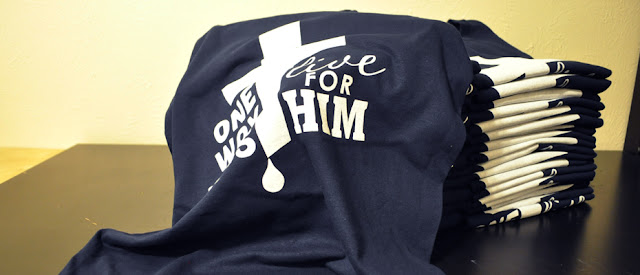HOW TO SCREEN PRINT T SHIRTS I started screen printing about 20 years ago, when I first started making my first printed T-shirts and accessories. I began by stenciling my designs which, while lovely, wasn’t time-consuming. There had to be a better way! I decided to start screen printing and, with a bit of trial and error, I taught myself at home. Twenty years later, I now have a fancy heat setting machine and use photo emulsion stencil-making methods, but I still use quite a rustic set-up for my printing. For this tutorial, I wanted to show how screen-printing short runs of a simple design on T-shirts can be done very easily at home with just a screen, a squeegee, some ink, a piece of paper and a craft knife. It's how I started, and if you like it you have the basics to start experimenting with more technical ways of making screen stencils. What you need Screen printing fabric ink. Try a ready-mixed ink to begin with, such as the Speedball range. Follow the instruc
Posts
- Get link
- Other Apps

Design Tipsasa Pondering some embroidered items for your business, club, school, family, or even yourself? It may seem overwhelming at first, with so many issues to address and decisions to make, but we’re here to make the process flow much easier. The end result will be garments that you and your group will be proud to wear! Here are a few tips to get you started to make your next embroidery project a rousing success. YOUR ART AND FINISHED LOGO SIZE Our first concern is the image quality of the artwork you submit, such as your company logo. It should be the best you can provide. (Of course, if we have already had your logo or artwork digitized for embroidery, this step is already done.) Crisp line art will reproduce better in embroidery than, say, a photocopy of a logo. Vector art is great. A good, clear photo is also acceptable. We discourage copying a logo or photo from a website due to quality issues, but if that’s the best you have, we can ha ve it improved (a sm
- Get link
- Other Apps

Embroidery Embroidery is the process of turning a graphic or text into a needle-and-thread work of art for application to a garment or other fabric item. Using state-of-the-art software and multi-head industrial sewing machines, embroidered designs can be simple, one-color designs or multicolored works of intricate detail. Of all the methods of fabric embellishment, embroidery is considered to add the most sophistication and a higher perceived value to a garment. EMBROIDERY PROCESS: Today’s custom embroidery is a primarily automated process that translates a digital image into data that guides the operation of industrial sewing machines capable of up to 1,500 stitches per minute. DESIGN AND DIGITIZE IMAGE: Create or adapt a design for embroidery, bearing in mind that simpler designs with open areas translate best into stitches. Designs with open areas will allow fabric to drape more naturally. Once complete, the design must be digitized to translate it into stitc
- Get link
- Other Apps

HOW TO DO SCREEN PRINTING Screen printing (also known as silk screening) is a printing technique that uses stencils and ink to create designs on fabric. Although it requires significantly more set-up time than digital printing or heat transfer, screen printing is the most economical method for producing large quantities. Commonly used on cotton or cotton blend apparel, screen printing can be done on 100% polyester using special inks and additives. SCREEN PRINTING PROCESS Screen printing on 100% polyester presents two unique challenges. The first is dye migration – ink discoloration that occurs when exposure to high temperatures causes dye to “migrate” from the garment into the screen print ink. To prevent this problem, use highly opaque ink or print a base layer of a barrier material, and cure at the lowest recommended temperature. The second challenge is shrinkage. To avoid this, careful handling is essential when applying heat to polyester fabric, which can shrink or bur
- Get link
- Other Apps
Screen Printing Art! Namugera Art & Design Centre, Masaka Introduction Namugera Art & Design started in the year 1993 in Masaka town by Namugera Ponsiano with 2 staff specialising in all forms of artwork. Started in a small way and corridor with no connection to main road, Elgin (Kampala) road, Masaka. After 1998 shifted to present location with bigger space easier to locate. Currently business has 4 full time staff In 2003, a branch opened in bukoba – Tanzania, Kagera Art & Design with 3 full time staff. Activities Printing of banners, T-shirts, school badges, table-cloths, Selling of printing paste, dyes, films, matt, screens and plain T-shirts Making Posters, sign-posts, Engraving Artistic work with batiks and painting Reputable Clients Masaka Diocese Development Organisation (MADDO) Rakai Health Services, Rakai District - Masaka, Uganda Bright Grammar Primary School St. Henry's College Kitovu -

